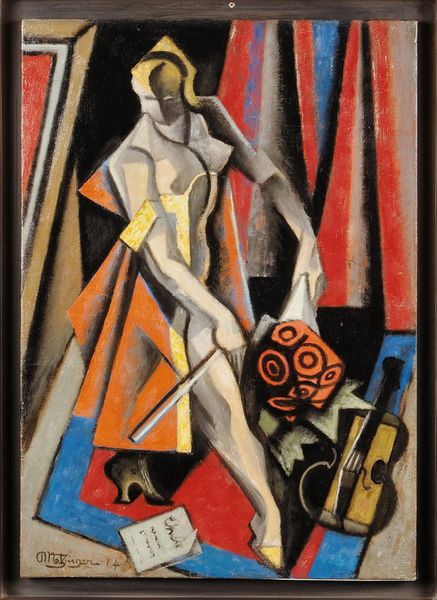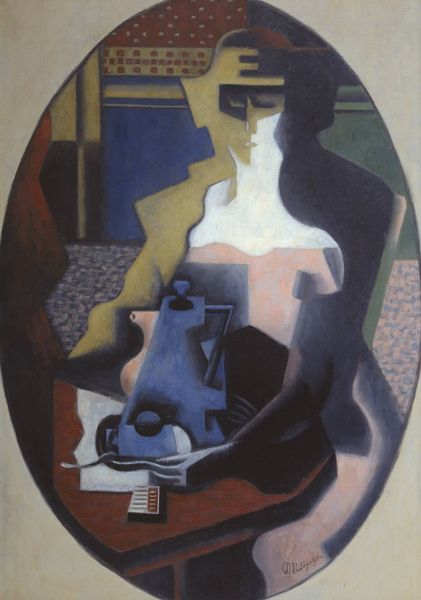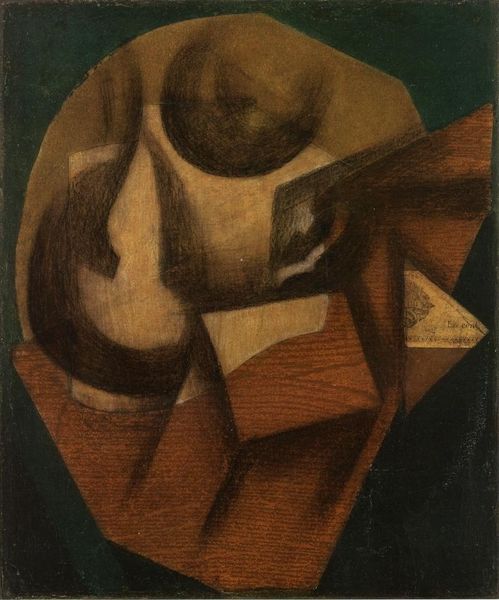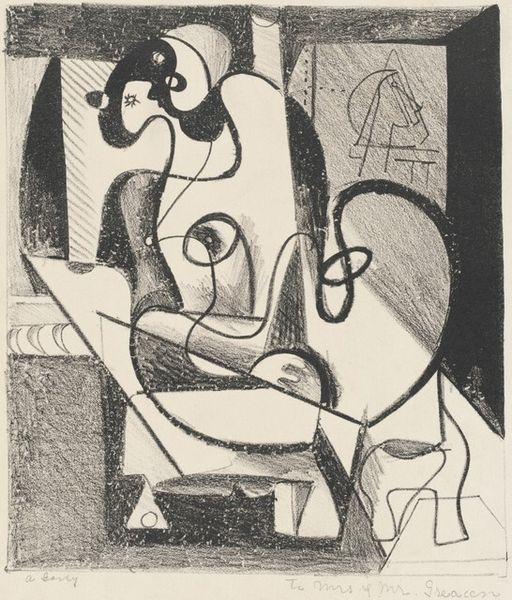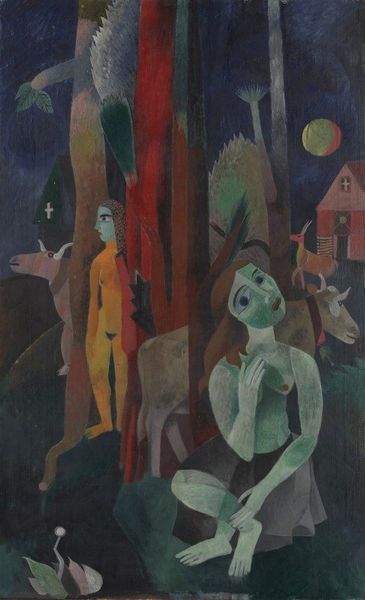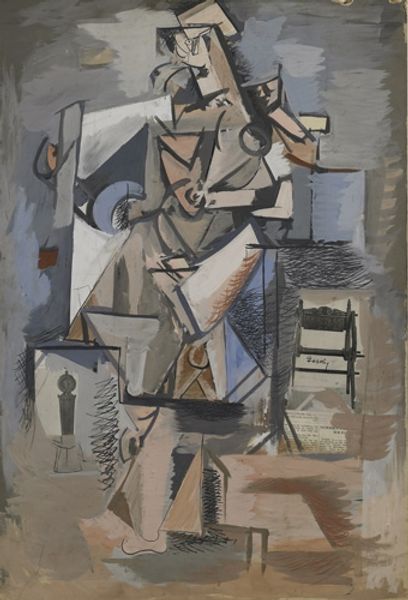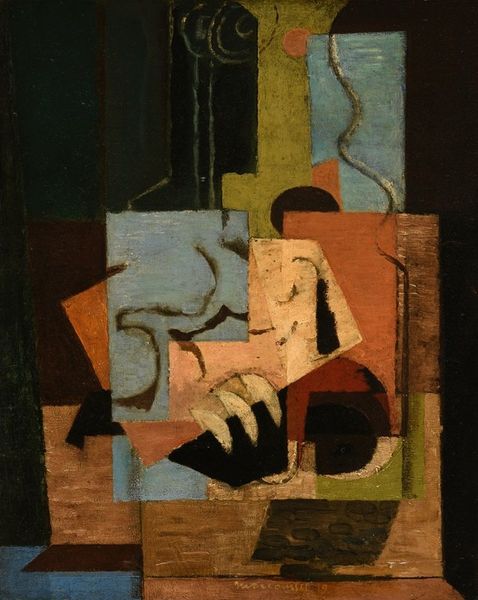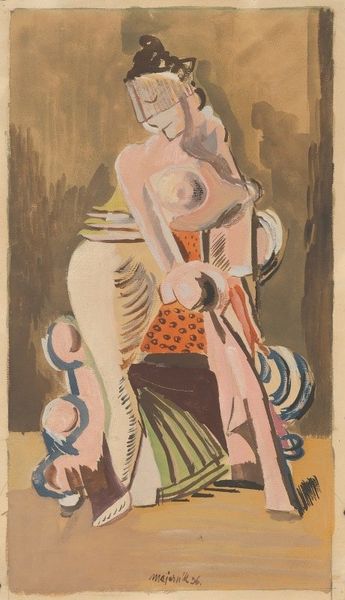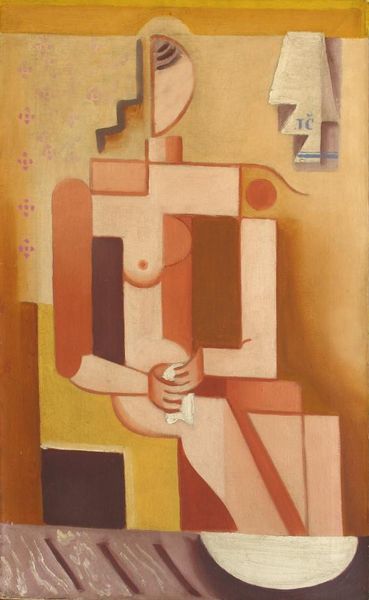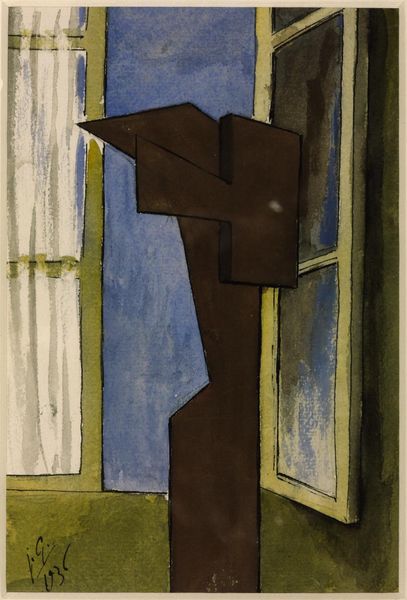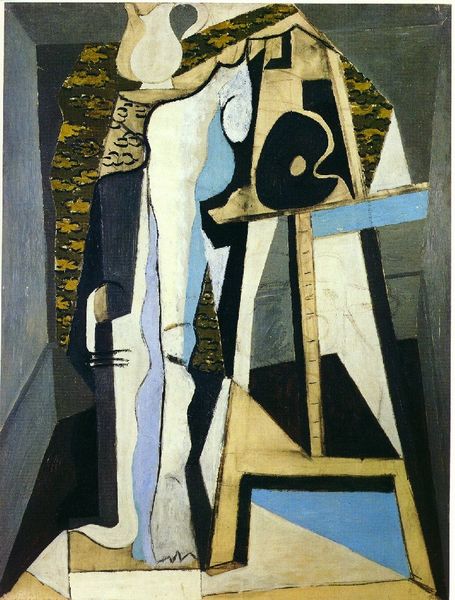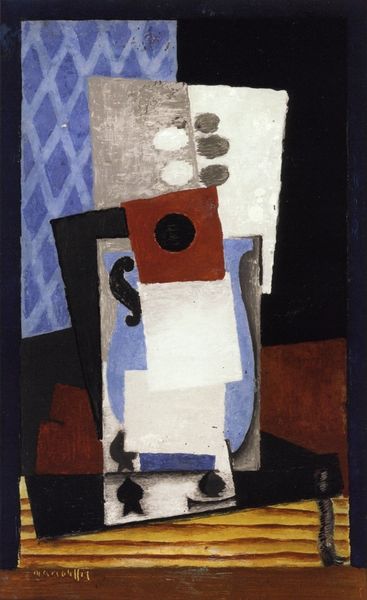
oil-paint
#
portrait
#
cubism
#
oil-paint
#
figuration
#
oil painting
#
underpainting
#
abstraction
#
nude
Copyright: Public domain US
Curator: Immediately, I see a fractured beauty. It’s intriguing, a study in contrasts and light. Editor: We're looking at "Nude in Front of a Mirror," an oil painting created by Jean Metzinger in 1912. It’s an important piece from his Cubist period. What intrigues me about the work is Metzinger’s engagement with depicting modernity itself through a highly abstracted nude. Curator: Yes, the visible brushstrokes reveal the artist's process so clearly. Note the layering of pigment. The materials themselves communicate a tangible presence and labor involved. Editor: It does feel tactile. And speaking of labor, let's not forget the tradition of the nude and its relationship to artistic production. From academic salons to avant-garde galleries, the nude body became a testing ground for aesthetic and social ideologies. The politics surrounding what constituted appropriate and moral representation for the bourgeois public must be considered. Curator: Absolutely. And the flattening of the figure through geometry makes a direct material impact. The figure is broken down into shapes. Rather than presenting a continuous surface or unified perspective, it reveals construction—the act of seeing becomes about how the painting is made. The visible geometry seems to mimic the industrial mechanization occurring at the time, as if human subjectivity were being dissected on the manufacturing floor. Editor: A chilling yet valid read, and the way the figure appears in dialogue with her mirror image forces the viewer to confront her very fragmentation and modernity's reshaping of the body and the psyche, which museums were both complicit and resisted, given their pedagogical imperative. What did the emergent Bourgeois patrons think? The title announces the figure's nudity, of course. But I imagine its first audiences also engaged the image as symbolic of what cultural institutions deem worthy to view... Curator: The textures are compelling—almost a collage effect from layering—and disrupt expectations about painting and materiality. And the colors, though restrained, are deliberately juxtaposed and show intentional layering as it moves from red, to black to the figures form. Editor: So in sum, this image—both abstract and confrontational in its historical and sociopolitical awareness, reveals modernity's effect on individual lives within institutional boundaries, no? Curator: Precisely. Seeing both process and product—Metzinger's method and modernity’s machinations—makes for a particularly poignant combination here. Editor: A layered synthesis worth our attention.
Comments
No comments
Be the first to comment and join the conversation on the ultimate creative platform.
